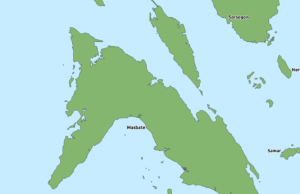Increased wages, not "inflationary" nor will result in "losses" to companies


Fake “economist legislators” in the Lower House are opposed to the meager ₱100 wage increase proposal now being discussed in the Senate. According to Rep. Stella Quimbo and Rep. Joey Salceda, any increase will result in an increase in the prices of goods and services (inflationary) and the “closing” of small and medium enterprises (SME). These excuses are the reasons cited by both foreign and local big capitalists every time the workers insist on a wage increase, no matter how small it is.
The anti-labor secretary of the Department of Labor and Employment advises workers not to ask for a wage increase. It only advised that three of a 5-person family work to reach a living wage. The secretary did not mention that the regime he serves has not created any decent jobs and that many of the existing jobs are irregular and low-wage and thus are paid less than the minimum wage. More importantly, it is not a matter of finding more work for the workers to insist on increased wages, but rather providing just and proper compensation for the labor power they sell.
The excuses of congressmen and capitalists have been debunked several times by progressive researchers and economists. In the Ibon Foundation’s study of the history of wage increases in the country, it proved that not all wage increases cause prices of goods and charges to go up. In fact, there are many times when inflation remained down, six months after wage increases. According to other economists, the increase in wages can only be proven to be “inflationary”, (also called wage-price-spiral by pro-capitalist officials), if prices increase continuously along with continuous increases in salary. In fact, the inflation rates have soared without a single increase in wages.
Clearly, workers’ wage levels have not kept up with increases in the prices of goods. In December 2023, the real value of the ₱610/day minimum wage in the National Capital Region is only ₱505.23. This is the highest minimum in the entire country. Next to it are the real wage value in Calabarzon which is ₱420.71. These are less than half of the living wage, set to reach ₱1,188 per day by 2024.
It is also not true that any across-the-board increase in wages of ₱750/day or even ₱1,100/day will be detrimental to “small companies”. Businesses with 10 or fewer workers are not covered by the wage increase orders. There are also many ways for small companies with 20 workers or less to keep up, such as providing financial assistance, low interest on loans, charging them less or no tax, and helping them cope with high material prices for production and transportation charges and many others.
Furthermore, more than half (51.4%) of the formal sector workers covered by the wage orders work in large companies earning billions, and thus have grounds to demand higher wages for their respective families to live decently.
In NCR, for example, it will only take an extra ₱140 to reach the ₱750 national minimum that the labor sector has long been fighting for or ₱490 to achieve a living wage. If these are awarded, the workers’ income will be increased by a modest ₱2,800/month or a substantial ₱9,600/month, enough to meet their daily needs.
Nationwide, the ₱537 national average minimum would require an increase of ₱213 to bring all workers’ wages up to ₱750. According to the number of businesses, and the number of workers they employ in 2021, the total wage increase will amount to ₱340,913,354,340. This is a mere 13.2% of the total revenue of the companies concerned.
Even if wages were raised to the living wage level of ₱1,100 as demanded by the workers, such companies won’t go bankrupt. Based on the national average minimum, it would take ₱901 billion to award a living wage to all workers nationwide, equivalent to 34.9% of their earnings. The companies’ profits will decrease, but they will still make a whopping ₱1,680,654,477,660, based on their net income in 2021.
On the other hand, a significant increase in wages would mean an increase of ₱490 to ₱563 per day in workers’ income. Every month, their wages will increase by ₱9,600 to ₱11,600, enough for them to eat well, send their children to school, and save at least a little for emergency expenses.











